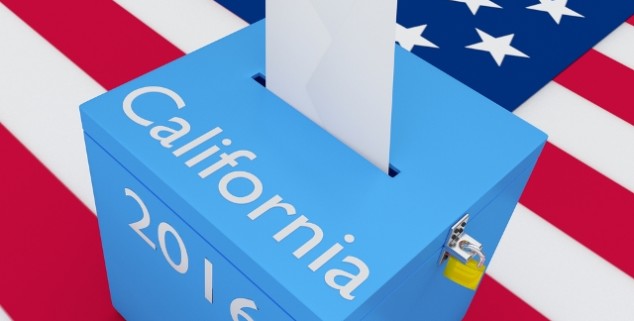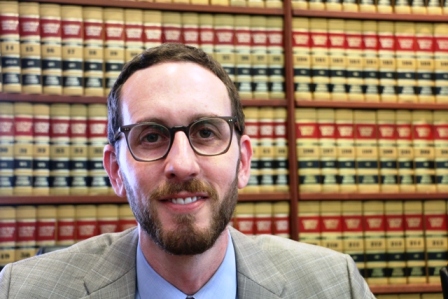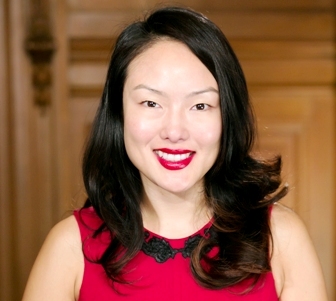News
Top two: Democrats feel the heat
 A California ballot box. (Photo illustration, Hafakot, via Shutterstock)
A California ballot box. (Photo illustration, Hafakot, via Shutterstock)California’s fledgling top-two voting system, which creates an open primary for statewide and other offices, could prove costly to Democrats in liberal districts while rewarding Republicans who lose.
Passed by voters in 2010 as Proposition 14 and intended to create more moderate winners in primary elections, top two is a system in which the two leading candidates in the primaries, regardless of political party, advance to the general election in November speeddating oslo. Top two applies to races for the Legislature, Congress, constitutional offices and the U.S. Senate.
What this means for heavily liberal areas in Northern California is that voters could be presented with the choice of two Democrats and no Republicans in the general election.
In one-party towns like San Francisco, the top-two system makes the race twice as long, twice as expensive and twice as volunteer-intensive
For the first time in history, California’s June 7 primary election could produce two female democrats for U.S. Senate— state Attorney General Kamala Harris and U.S. Rep. Loretta Sanchez.
Of the dozens of legislative seats up for grabs, several races could pit two Democrats against each other in the general election. Those include the Bay Area’s Senate District 9, held by Loni Hancock, D-Berkeley, and SD 3, held by Lois Wolk, D-Davis. Both are termed out.
An example of a liberal district that hasn’t elected a Republican for decades is SD 11 in San Francisco. Incumbent Mark Leno, California’s first openly gay state senator who captured more than 80 percent of the vote in 2012, is termed out and a political battle is now under way for his seat.

Scott Wiener
Two well-known Democrats, Scott Wiener and Jane Kim, are running against lesser-known Republican Ken Loo, a firefighter and business owner. Kim and Wiener, both members of the San Francisco Board of Supervisors and both flush with hundreds of thousands of dollars in campaign contributions, don’t seem to be sweating the June vote.
“We have a very strong campaign and I am certain I will be in the top two going to the general election this November,” Kim said.
Wiener said that in one-party towns like San Francisco, the top-two system makes the race twice as long, twice as expensive and twice as volunteer-intensive because the two leading Democrats essentially repeat the same race.
“You are putting much more pressure on candidates to raise money because you have to raise it twice,” he said.
So why would a Republican even run in a district with less than 10 percent registered party voters?
“I think there are a lot of undercover conservatives in San Francisco.” — Ken Loo.
One reason, Wiener said, is that under party rules, the highest vote-getting Republican automatically gets a seat on the party’s central committee for the next four years. These committees, which exist throughout the state, are responsible for shaping party policy by making official endorsements in local races.
“I could see someone running in order to assure themselves a seat on the party central committee,” Wiener said.
Loo, a third-generation San Franciscan, was a last-minute replacement for another Republican who had dropped out of the race, potentially leaving no GOP choice for voters. He said the San Francisco Republican Central Committee is a secondary concern for him and that he could win the race if he hits his target of just over 33 percent of the vote.
“I think there are a lot of undercover conservatives in San Francisco,” he said. “At first I was really skeptical but [conservative] candidates [in District 11] almost always double the Republican registration on a shoestring budget.”

Jane Kim
In more contested districts, a different dynamic is more likely to play out if enough democratic candidates split the vote, said Paul Mitchell, vice president of Political Data Inc. Mitchell sees 35 percent conservative voter support as a key threshold for a lone Republican candidate running in a highly liberal district.
“If the counter party gets 35 percent, it’s mathematically impossible for them to get beaten by two Democrats,” Mitchell said. “That person would really have to screw up not to make it to the general election.”
Of the 20 state Senate races in June’s statewide primary, only seven districts even meet that level of registered Republicans.
State Controller Betty Yee, who ran for office in the 2014 top-two primary, said the top-two voting system also affects the strategy of each campaign.
“Candidates will have to make a decision, essentially, about whether to reach out more broadly to the electorate at the very outset of their campaigns, or whether they just want to get through the primary, which will mean being sure their base supporters come out and get them to qualify for one of those top-two slots,” she said in an interview. “It takes money to do broader outreach.”
Another wild card in the primary, Yee said, is the mass of unaffiliated voters who may identify less closely with extreme party politics. As of January 2016, an average of 24 percent of the registered voters across all state elections are not affiliated with a political party.
“We have a growing number of decline to state voters—that’s really our largest growing voting population right now,” she said “So, perhaps the best strategy is to do the broader outreach.”
—
Editor’s Note: Ted Andersen is a student at UC Berkeley’s Graduate School of Journalism.
Want to see more stories like this? Sign up for The Roundup, the free daily newsletter about California politics from the editors of Capitol Weekly. Stay up to date on the news you need to know.
Sign up below, then look for a confirmation email in your inbox.

Sometimes top-two shuts out the majority party. In 2012, 4 strong Democrats ran in the primary for US House, 31st district. This is a very Democratic district (Mitt Romney only got 41% inside this district in November 2012; so did the Republican running for US Senate). However, because the four Democrats split the Democratic vote in the primary, the top-two vote-getters were two conservative Republicans. In November, with only the two Republicans on the ballot and no write-in space, 23.1% of the voters who cast a ballot just left US House blank. It is time to replace top-two with something that preserves voter freedom in November.
One of the more foolish arguments I’ve ever seen presented to throw out the top two system. The number of times the situation described above, can be counted on the fingers of one hand in decades and decades of state elections.
Contrast that with the 99% guaranteed chance that in most districts you had year after year of fake November elections with a incumbent always running against a super weak challenger from the other party.
California doesn’t have decades and decades of experience with top-two. It has only been used in 2012 and 2014.
What I meant was,….had the “top-two” system been in place during preceding decades..
Sir, the bottom line is that until we finally got the top two system, there had been almost ZERO competitive elections for congress or the state legislature for the preceding 40 years.
I know… my members of congress, assembly, and state senate…never had challengers in their own party.
Pete Stark was my congressman from my first vote in 1972, until he was defeated in 2012. Had we not had the top two, he would have easily been reelected.
Same for each and every state legislator. ONLY when one of them chose to retire, or more normally was “termed” out, did we ever get a new choice.
Where I live, the primary was the entire election since no Republican ever got close to even 40% of the vote.
Top two gave me my first real democracy in 40 years.
You’d have Pete Stark still in office…while party members would caution challengers to “wait their turn”….
Even in the case of Pete Stark… the party robots fell in line.. supported him. Had top two not been available.. Pete would have been the only Democrat in November and would have won easily.
No…top two is far more important than even term limits or the redistricting reform that we passed.
It was the first actual law to bring me some democracy.
Those who complain are largely “nuts” who still want to run a no-name Repubican that will get 15% to 30% protest vote, but who never ever have a shred of a chance to win.
Same thing…on the opposite side where a district is fully Republican.
It would seem that you’ve never gone back over 40 years and run the numbers on same party incumbents ALWAYS getting re-elected.
Still difficult even under this new system.
At least a more moderate Democrat has a chance. Has already happened twice in my area…
Glazer in the legislature and Swalwell in the congress.
Neither would have been elected without top two.
The old system frequently dumped lots of incumbent California legislators. After the November 1994 election Republicans had 40 members of the Assembly, but after the November 2010 election they only had 28 members of the Assembly. You are right about Pete Stark; that is the one US House race in California in which top-two did something helpful, in the years since it started. But he had such terrible manners, I suspect he would have lost in 2014 even if he hadn’t lost in 2012.
The number of women in the California legislature has significantly declined under top-two, and the scholarly research on that blames the top-two system. And I hope you acknowledge that Steve Glazer would have been elected under the old system.
You also ignore the current race of Mike Honda vs Ro Khanna.
Without the top two, Khanna would still not have a chance.
This time, he finally take out Honda…. despite lots of the knee-jerk Democrats still tied to the incumbent…loyalty gone awry.
http://www.sfchronicle.com/opinion/article/Wake-up-Democrats-Steve-Glazer-s-win-is-no-6282533.php
Under the old system, Ro Khanna would have been free to be an independent candidate. With a petition, under the old system, he would be guaranteed a place on the November ballot. Under the old system, independent candidates were elected to the California legislature in 1986, 1990, 1992, and 1994. A Green was elected in 1999.
“Under the old system, Ro Khanna would have been free to be an independent candidate. With a petition, under the old system, he would be guaranteed a place on the November ballot. ”
OK… that does it… you are either some zealot for the forgotten and hopeless third parties… or you are happy to live in a dream world.
Yeah sure… Khanna “petitions” and then ends up on the ballot.. and wins…
Sure… sure…hard to believe that you believe such tactics had a 1% chance of working…
I’ve been following elections since 1958 when my family member ran for election and held office for many terms… The stuff you speak about as being practical makes you sound like you are part of some fringe group that is bent out of shape because their usual 0.3% candidate won’t be included on the Nov. election.
Honda’s seat… just like Starks… was his to keep as long as he could stay awake and not drool during public appearances. With the top two system we can finally have a few real elections.
Five times, independent or minor party candidates were elected to the California legislature in the 1980’s and 1990’s. Around the US, there were 22 such people elected to state legislatures in 2014, and 25 in 2012. We have two independent US Senators right now. Independent and minor party gubernatorial candidates have been elected not so long ago in Alaska (2014), Connecticut (1990), Maine (1998, 1994), Minnesota (1998), Rhode Island (2010).
You are hopeless…
“Around the US, there were 22 such people elected to state legislatures in 2014, and 25 in 2012”
Do you have any idea how many thousand state legislators there are in the 50 states….
In only the first 5 states I looked… they amounted to 933
There are probably over 7000 or 8000 and you want to point out a couple dozen as examples of how the system works in under your favored system.
What is that, 1 in 300…. oh yeah, sounds like a good system.
You should take into consideration the small number of independents and minor party candidates who run for the legislatures. In California, over half of the independent candidates who ran for the legislature during 1986-2010 were elected. If Quentin Kopp can do it three times, why can’t Ro Khanna?
This needs to end… Your touch with reality is deeply flawed by your insistence that your view is possible in anything other than 1% of situations.
Prior to passage of the top two… I might as well have been living in the old Soviet Union, for all the competitive elections we ever had…excepting when a candidate died or was termed out.
Even then, those who ran, dashed to the extreme of the party to win the primary… Then in Nov. there was no contest.
Enough of this… thank goodness for the top two as well as citizen redistricting. Too bad more states don’t do it.
Good bye Mike Honda….now you can sleep at home instead of inside congress.
Six times, an independent candidate ran for the legislature during the period 1986-2010 (all under the old system). Two-thirds of the time, the independent won the election. And none of the independent candidates who won during those years was as well-funded as Ro Khanna.
I agree with you about redistricting reform. It is because of redistricting reform that our elections are now more competitive. They still aren’t very competitive when an incumbent is running, however. In 2014, no incumbent member of Congress from California was defeated, and only one member of the legislature was defeated.
The whole point of the initiative was to give more moderate candidate of a particular party a chance in elections, not to make easier for established candidates or parties to select the next apparent heir. Election of individuals like Steve Glazer show what is possible.
Steve Glazer would have won under the old system. Steve Glazer ran in a special election last year. Under the old system, all California special legislative and congressional elections used a blanket primary. Under the blanket primary Steve Glazer would have won easier than he actually won. He got the most votes of any Democrat running. Under the old rules the run-off would have been between him and the only Republican candidate. She had such a weak campaign, Glazer would have not only been elected, but saved a lot of money because he would hardly have had to spend a penny on the run-off.
Are the partisans seriously complaining that California’s elections have become too competitive now under the Top Two Nonpartisan Primary? Boo hoo hoo.
The voters, not the parties, own our government. As you quote Yee at the end: “So, perhaps the best strategy is to do the broader outreach.” Yes, that’s because the voters now have the power, not the parties.
The right to vote includes the right of choice for whom to vote. In November 2014, Californians were the only people in the USA who either had to vote for a Democrat or a Republican for all the statewide offices, or they couldn’t vote at all. I had never missed voting in my entire life, but I didn’t vote in November 2014 because both candidates on the ballot for Governor want to maintain the criminalization of marijuana, and I wanted to vote for a pro-legalization candidate. Top-two supporters are so dismissive of voter choice, they even took away write-in space in November for congress and state office.
Harris’s WET DREAM to become US Senator will never materialize–given her
criminal complicity with selfie/photo op addicted Robert Garcia of Long Beach in
a criminal ruse-which will result in prison terms for both.
For more details-turn to the story on this site regarding newly elected Speak of
California Assembly who revealed his true character, or lack there of manifested by
his fawning over she so REBUKED by the US 9th Circuit-for the EPIDEMIC OF
CORRUPTION the BIMBO-has engendered-the BI PARTSIN Panel all but suggested
she resign!!!!